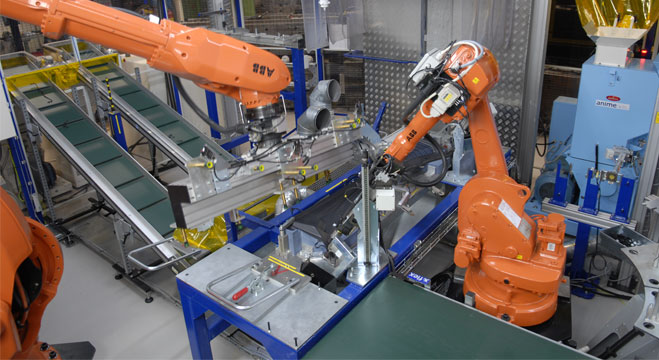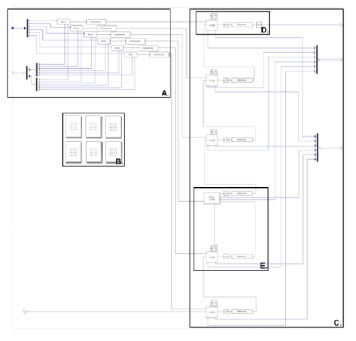User Case Study:
MapleSim used to speed up development of high-fidelity robotic manipulator models


Challenge
ABB Robotics was designing and controlling industrial robotic manipulators using non user-friendly tools that made the process extremely tedious and time-consuming. They set out to find a better option.
Solution
Using MapleSim, ABB was able to dramatically reduce their model development time, get up to speed quickly and improve their existing toolchain.
Result
ABB engineers can now create multiple models in the same amount of time it was previously taking them to create just one. MapleSim's ease-of-use features and drag-and-drop interface meant ABB engineers could quickly and easily learn the tool, with little training required. Strong connectivity to Simulink® meant that ABB didn't need to change their existing tools, they just integrated MapleSim to enhance their capabilities.
All across the world today, industrial robots perform tasks that range from palletizing boxes in a warehouse, to transporting hoppers of ingredients across a food preparation factory, to precision welding on a vehicle assembly line. The successful completion of these tasks relies on the accurate control of the robotic manipulators to provide the required dexterity. With over 250,000 robots installed worldwide, engineers at ABB's Robotics business unit understand the challenges of designing and controlling robotic manipulators. Their design process includes rigorous testing with the aid of simulation models which they had been deriving using non user-friendly tools. The tedious nature of this process left them searching for a better solution.

Working with a research team from Linköping University in Sweden, via the industry excellence center LINK-SIC, engineers at ABB's Robotics business unit in Västerås, Sweden, set out to evaluate the use of MapleSim, the high-performance modeling and simulation platform from Maplesoft, to develop high-fidelity manipulator models that included flexible joints, gears, and dynamic friction, and to determine the ease with which the models can be exported and integrated with other software tools for simulation or controller development.
Their goal was to create high-fidelity models that were realistic enough to replicate the operation of a real manipulator, while still being able to run simulations on a regular desktop computer. While their previous process of deriving models using methods such as the Euler-Lagrange formulation worked well, MapleSim's graphical interface eliminated the need to derive and manipulate equations, drastically reducing the time needed to model a manipulator.
MapleSim's extensive library of built-in components enables users to simply drag and drop, then seamlessly connect components from different domains to create complex system-level models. This ease of creating models radically changed the way in which design engineers at ABB worked. They now had a more user-friendly and flexible modeling tool. Using a combination of multibody mechanics, 1-D mechanical, electrical and custom components, they were able to create multiple models of their robotic manipulator with MapleSim, in the same amount of time it was previously taking them to create just one model.
They used the time saved to apply different modeling approaches, and created models with different parameter values and levels of complexity, to determine how best to meet their design goals. Describing the flexibility that MapleSim offered them, Mikael Norrlöf, Motion Control Architect at ABB's Robotics business unit said, "MapleSim helped us to work faster and smarter. We were able to quickly create multiple models of our robotic manipulator design, and easily compare them, to determine the best fit."


Simulink is a registered trademark of The MathWorks, Inc.
 Contact Maplesoft to learn how MapleSim can help with your projects
Contact Maplesoft to learn how MapleSim can help with your projects